Introduction to Sales Funnel
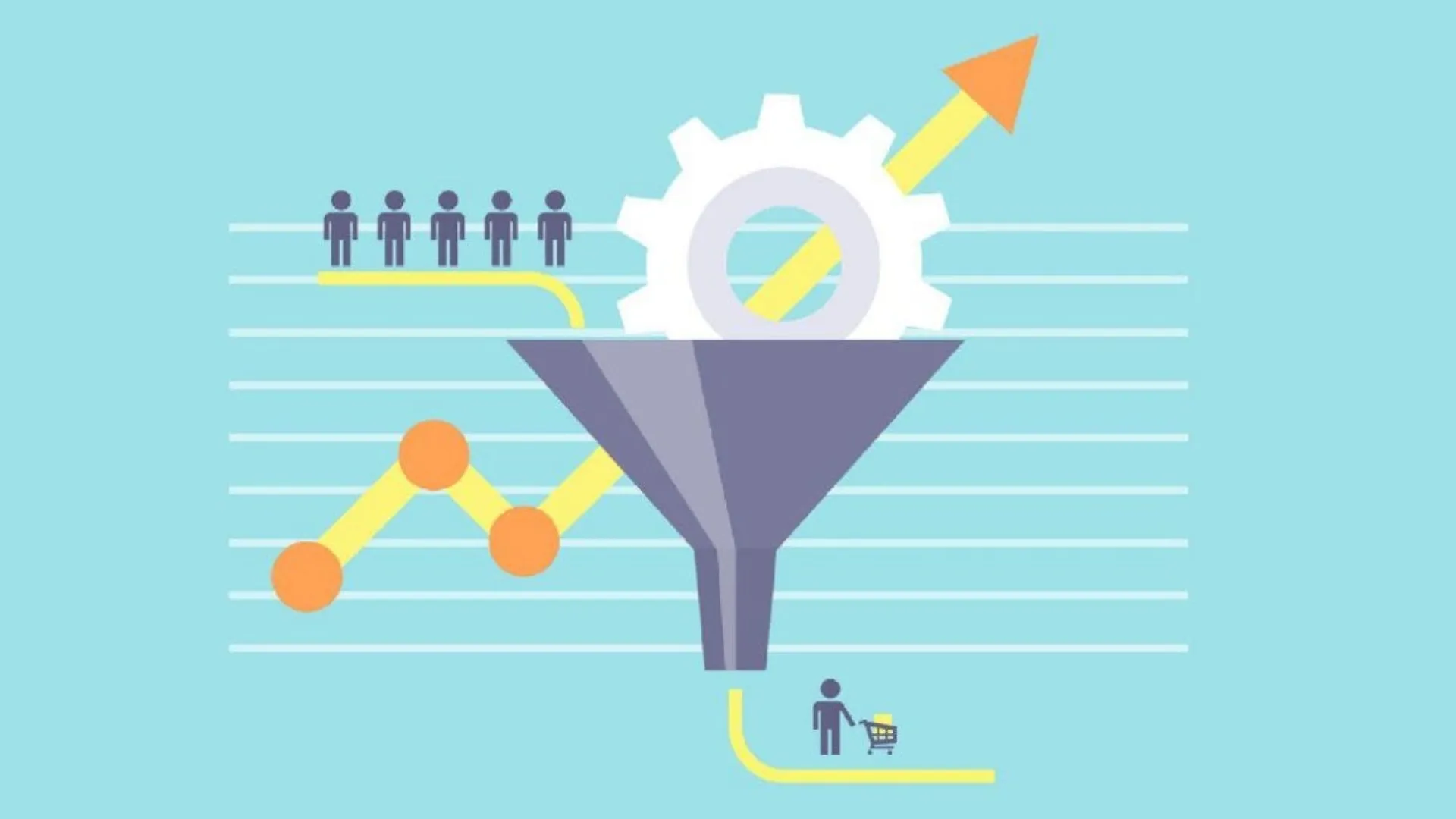
What is a Sales Funnel
A sales funnel is a marketing concept that maps out the journey a customer goes through from first becoming aware of a product or service to making a purchase. It's visualized as a funnel because it represents the narrowing process of guiding potential customers through the stages of awareness, interest, decision, and action.
The concept of sales funnels is crucial for businesses aiming to optimize their sales process and increase conversions effectively.
Stages of a Sales Funnel: From Awareness to Action
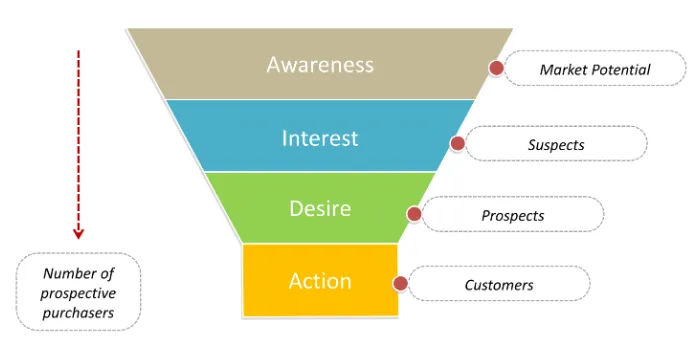
1. Awareness:
- The journey begins when potential customers discover your product or service. This could be through various channels such as social media, search engines, or word of mouth.
- The awareness stage is critical because it sets the stage for all subsequent interactions with the customer. A strong first impression can significantly increase the likelihood of eventual conversion.
- Utilize targeted advertising and SEO strategies to increase visibility. For example, businesses that invest in SEO can see a growth in traffic by up to 1000% compared to organic social media, which only accounts for a 25% increase in engagement.
2. Interest:
- At this stage, potential customers show interest in learning more about your products or services. They're looking for solutions to their problems and evaluating if you can offer the solution they need.
- Capturing the interest of potential customers is crucial for keeping them engaged. Customers who find valuable information are more likely to remember your brand and return when they're ready to purchase.
- Provide informative and engaging content that addresses common questions or concerns. For instance, content marketing generates over three times as many leads as outbound marketing and costs 62% less.
3. Decision:
- Prospective customers are now considering making a purchase. They might compare your offering to your competitors' to determine the best fit.
- This is the stage where you can differentiate yourself from competitors and convince the customer that your product or service is the best choice.
- Offer clear comparisons, testimonials, and case studies. Businesses that present case studies on their website see, on average, a 30% increase in conversion rates.
4. Action:
- The final stage of the funnel, where the customer makes a purchase decision.
- Successfully guiding a customer through to the action stage results in a conversion, contributing directly to your revenue.
- Ensure a smooth and hassle-free checkout process. Simplifying the checkout process can increase conversion rates by up to 35%.
Why is Sales Funnel Important for any Business

Understanding and optimizing the sales funnel process is essential for enhancing the efficiency of the sales team, streamlining the sales process, and ultimately boosting sales success.
Here’s why a sales funnel is vital for any business:
1. Streamlines the Sales Process:
- A well-defined sales funnel clarifies the steps needed to convert a lead into a customer, making the sales process more efficient.
- By identifying the sales funnel stages, a business can tailor its marketing and sales efforts more effectively, ensuring that prospective customers receive the right message at the right time.
- Streamlining the sales process leads to a more organized approach to handling leads, which can significantly improve the productivity of the sales team and reduce the sales cycle length.
2. Increases Conversion Rates:
- By understanding the journey of prospective customers through the sales funnel, businesses can optimize each stage to encourage progression to the next step.
- Techniques such as targeted content for the awareness stage, engaging interactions for the interest phase, persuasive offers in the decision stage, and a smooth transaction process in the action stage are crucial.
- Focusing on effective sales funnel strategies can dramatically increase conversion rates, turning more leads into paying customers.
3. Improves Customer Journey:
- A sales funnel allows businesses to map out the customer journey accurately. This mapping helps in identifying potential bottlenecks where prospects might drop off and provides insights into improving those areas to enhance the customer experience.
- An optimized customer journey leads to higher customer satisfaction, which is critical for customer retention and loyalty.
4. Facilitates Data-Driven Decisions:
- Monitoring and analyzing the performance of different sales funnel stages enables businesses to make informed decisions.
- Metrics such as conversion rates at each stage, customer lifetime value, and the effectiveness of sales funnel templates can provide valuable insights.
- Data-driven decisions help in fine-tuning marketing strategies, sales funnel examples, and sales processes for better alignment with customer needs and preferences, leading to more successful outcomes.
5. Enhances Sales and Marketing Alignment:
- The sales funnel serves as a common framework for both sales and marketing teams, promoting a unified approach to achieving business goals.
- This alignment ensures that marketing efforts generate qualified leads that the sales team can effectively convert.
- When sales and marketing are aligned, businesses experience improved efficiency, better resource utilization, and increased revenue.
Sales Funnel Example
To illustrate the importance and functionality of a sales funnel, let's consider a practical example involving an online software company that offers project management tools.
This example will walk through each stage of the sales funnel, highlighting how the company attracts and converts prospects into loyal customers.
Awareness Stage:
- The company launches a targeted Google AdWords campaign focusing on keywords like "project management software" and "team collaboration tools," aiming to capture the attention of potential customers seeking solutions to improve their team's productivity. Additionally, they leverage social media platforms to share insightful articles about the challenges of project management and how their software can help.
Why it's important: These efforts increase brand visibility among the target audience, effectively initiating the customer's journey through the sales funnel.
Interest Stage:
- Interested prospects are directed to the company's website, where they find a wealth of resources, including detailed blog posts, infographics, and free eBooks on project management best practices. The company also offers a free webinar on "Maximizing Team Efficiency with Project Management Tools."
Why it's important: Providing valuable content helps build trust and establish the company as an authority in project management, encouraging prospects to engage further.
Decision Stage:
- After engaging with the company's content, prospects are offered a 30-day free trial of the software. The company follows up with a series of emails highlighting key features and benefits, customer testimonials, and case studies of successful implementations.
Why it's important: This direct engagement, coupled with social proof, addresses potential concerns and questions, making the software the preferred choice for solving their project management needs.
Action Stage:
- Towards the end of the free trial, the company sends personalized offers, such as a discount on the annual subscription plan, to encourage conversion. They ensure the signup and payment process is seamless and user-friendly.
Why it's important: Streamlining the final steps towards purchase reduces friction and increases the likelihood of conversion from a free trial user to a paying customer.
Post-Purchase (Retention Stage):
- After purchase, customers receive onboarding emails, access to a comprehensive knowledge base, and 24/7 customer support. The company regularly updates customers on new features and offers exclusive discounts on upgrades.
Why it's important: Continuous engagement and support post-purchase enhance customer satisfaction and loyalty, encouraging long-term retention and the potential for upselling and referrals.
How to Create a Sales Funnel for Your Business
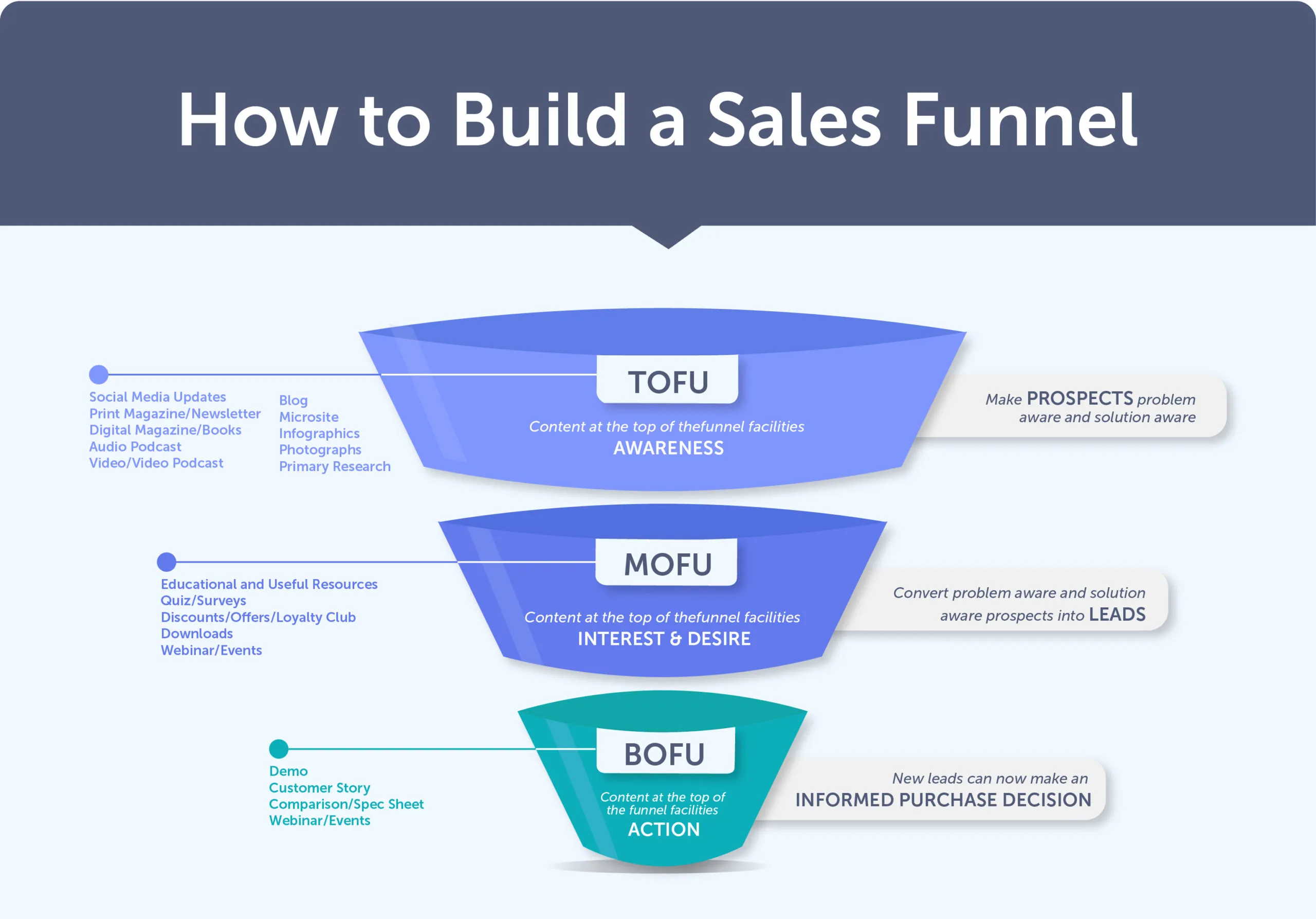
Creating a sales funnel is a strategic process that requires understanding your audience, crafting compelling content, and guiding prospects toward making a purchase.
Here's a step-by-step guide to creating your own sales funnel for your business:
1. Identify Your Target Audience
- Understand who your ideal customers are: Use market research and customer data to identify the demographics, needs, and preferences of your target audience.
- Tailoring your sales funnel to your target audience increases the effectiveness of your marketing efforts and improves conversion rates.
2. Generate Awareness
- Use various channels to attract prospects: Leverage SEO, social media, PPC ads, and content marketing to reach potential customers.
- Content Tips: Publish informative blog posts, videos, and social media content that addresses common questions and challenges faced by your target audience.
- Increasing visibility and generating awareness is the first step in drawing potential customers into your sales funnel.
3. Capture Leads
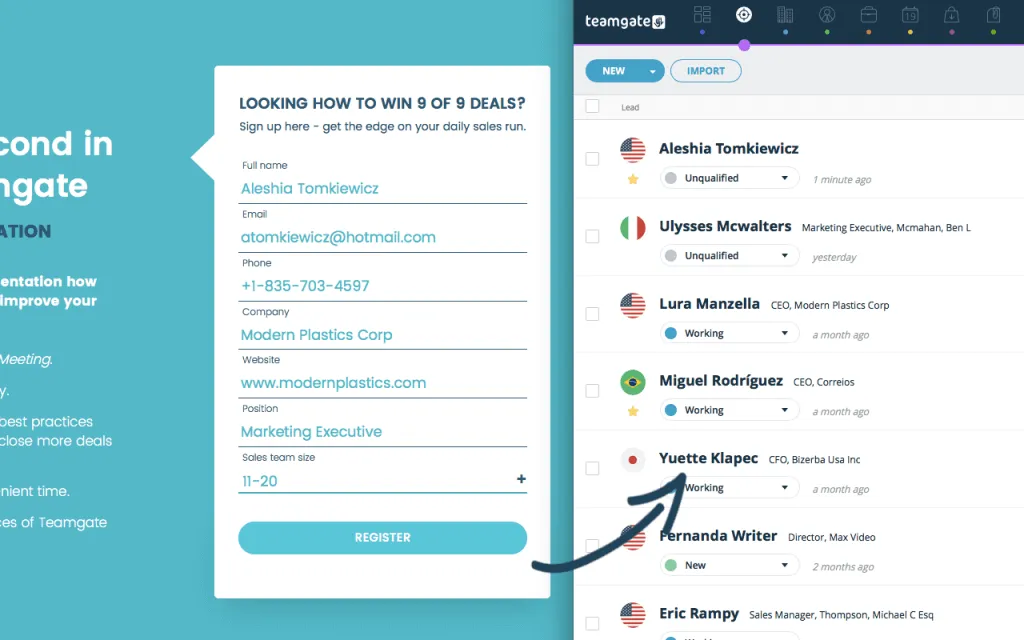
- Offer something of value in exchange for contact information: This could be a free sales funnel template, eBook, or webinar, compelling visitors to enter the sales funnel.
- Landing Page Optimization: Ensure your landing pages are clear, concise, and compelling, with a straightforward call to action (CTA).
- Capturing contact information allows you to nurture leads through the funnel with targeted communication.
4. Nurture Leads
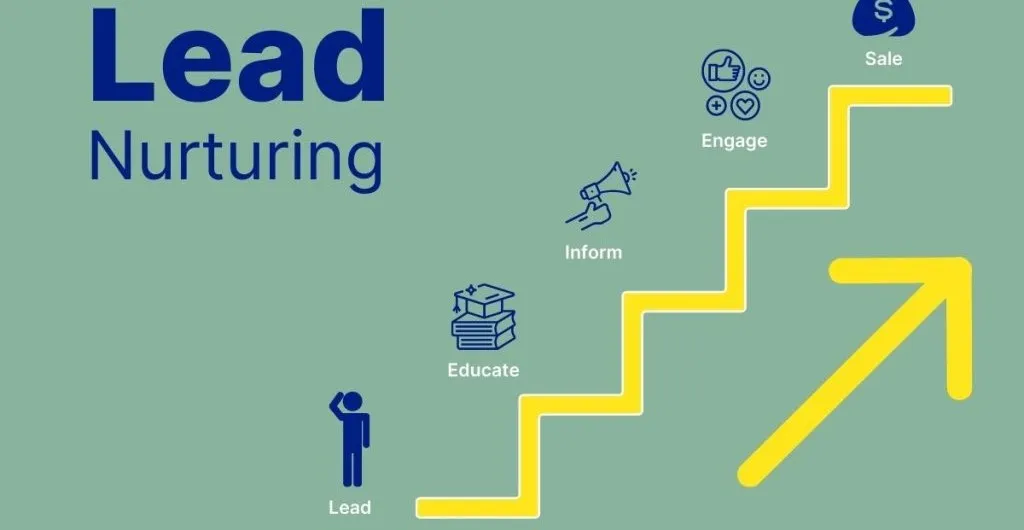
- Engage your audience with valuable content: Use email marketing to send personalized, relevant content that builds trust and establishes your authority.
- Segmentation: Tailor your messages based on the interests and behaviors of your leads to increase engagement.
- Nurturing leads with valuable content keeps your brand top of mind and prepares leads for the purchase decision.
5. Convert Leads into Customers
- Create a compelling offer: Present your leads with an irresistible offer, such as a limited-time discount, bundle, or exclusive package.
- Simplify the buying process: Ensure the path to purchase is as straightforward as possible to reduce friction and increase conversions.
- Converting leads into customers is the ultimate goal of your sales funnel, generating revenue for your business.
6. Optimize and Refine
- Analyze the data: Use analytics to track the performance of each stage of your sales funnel. Identify where prospects drop off and test different strategies to improve conversion rates.
- Continuous Improvement: Regularly update and refine your sales funnel based on feedback and performance data to maximize efficiency and effectiveness.
- Continuously optimizing your sales funnel ensures it remains effective over time, adapting to changes in customer behavior and market conditions.
Examples of Effective Sales Funnels in Various Industries
Effective sales funnels are critical for converting prospects into loyal customers across different industries. Here are examples from various sectors that demonstrate how tailored sales funnels can lead to impressive results:
1. E-commerce: Fashion Retailer
- Awareness: A fashion retailer launches a targeted social media ad campaign showcasing their latest collection, aiming to attract fashion-forward consumers.
- Interest: Visitors are directed to a stylish landing page where they can sign up for exclusive fashion tips and a 10% discount on their first purchase.
- Decision: Subscribers receive emails featuring fashion lookbooks, customer testimonials, and time-limited offers.
- Action: With the decision stage nurtured by compelling content and offers, customers are more inclined to use their discount on purchases, converting them into paying customers.
- Optimization: Post-purchase, customers are encouraged to leave reviews and are offered loyalty discounts, enhancing customer retention.
2. B2B: Software as a Service (SaaS)
- Awareness: A SaaS company uses content marketing, such as informative blog posts and SEO strategies, to attract businesses looking for efficiency solutions.
- Interest: Interested leads are offered a free eBook on improving business processes in exchange for their email addresses.
- Decision: Leads are nurtured with a series of case studies and webinars demonstrating the software's impact, coupled with a free trial offer.
- Action: After experiencing the software's benefits during the trial, businesses are more likely to subscribe to a paid plan.
- Optimization: Regular feedback requests and updates on new features keep customers engaged and improve the product.
3. Health and Wellness: Fitness Programs
- Awareness: A fitness coach uses YouTube videos to provide free workout tips, targeting individuals looking to improve their health.
- Interest: Viewers are invited to join a free "30-Day Fitness Challenge" by signing up on the coach's website.
- Decision: Throughout the challenge, participants receive motivational emails and exclusive content, promoting the benefits of the coach’s premium fitness programs.
- Action: Impressed by the challenge's results, many participants upgrade to a paid program for continued access to workouts and nutrition advice.
- Optimization: Ongoing support and community access via a members-only forum encourage long-term engagement and referrals.
4. Real Estate: Property Listings
- Awareness: A real estate agency uses targeted Facebook ads to reach potential homebuyers in specific locations.
- Interest: Prospects are directed to sign up for an exclusive newsletter featuring upcoming listings and open house invitations.
- Decision: Subscribers receive personalized property recommendations based on their preferences and financing tips, building trust and authority.
- Action: With trust established, prospects are more inclined to engage the agency for viewings, leading to property purchases.
- Optimization: Post-sale, clients receive home maintenance tips and are encouraged to refer friends, fostering community and repeat business.
5. Education: Online Courses
- Awareness: An educational platform runs Google ads targeting individuals seeking to learn new skills, directing them to free introductory lessons.
- Interest: After the free lesson, learners are encouraged to subscribe for more free content and resources.
- Decision: Subscribers receive detailed course outlines, success stories, and a limited-time offer to enroll at a discounted rate.
- Action: The compelling offer and demonstrated value convince many subscribers to enroll in the course.
- Optimization: Graduates are invited to exclusive alumni networks and given discounts on future courses, enhancing loyalty and lifetime value.
How to Measure and Analyze Your Sales Funnel Performance for Maximum Conversion

Measuring and analyzing your sales funnel performance is crucial for identifying areas of improvement and optimizing your strategies for maximum conversion.
A balanced approach, combining both qualitative and quantitative analysis, provides a comprehensive view of your funnel's effectiveness. Here’s how to embark on this analysis:
Understanding Key Metrics
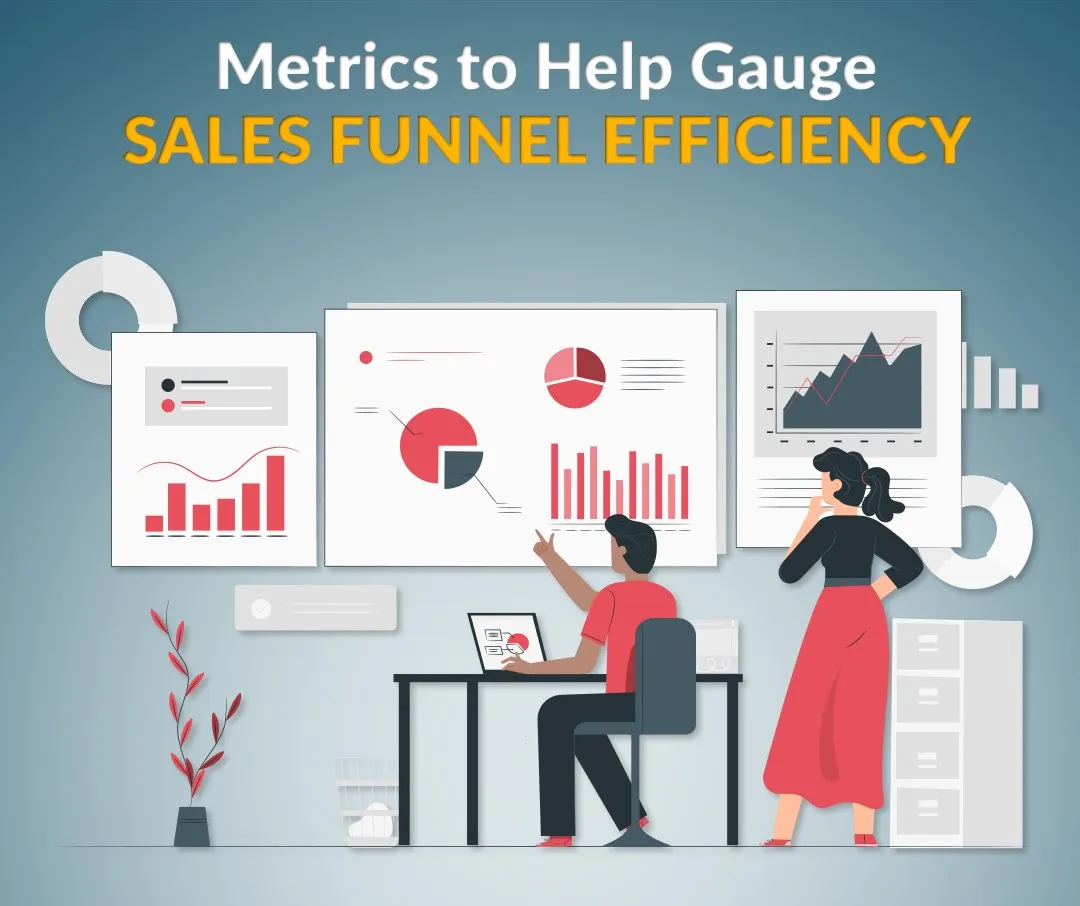
Start by familiarizing yourself with the essential metrics that will give you insight into your sales funnel's performance.
Conversion Rates: Track the percentage of leads that move from one stage of the funnel to the next. A drop in conversion rates at any stage indicates a potential issue that needs addressing.
Customer Acquisition Cost (CAC): Calculate the total cost of acquiring a new customer. A high CAC compared to customer lifetime value (LTV) may suggest inefficiencies in your funnel.
Customer Lifetime Value (CLTV): Understanding the average revenue a customer generates over their lifetime can help you determine how much you should invest in acquiring new customers.
How to Measure Key Metrics
1. Conversion Rates
Measure the percentage of leads that move from one stage of the funnel to the next. For instance, if 100 people visit your landing page and 10 sign up for a trial, your conversion rate from visitor to trial is 10%.
2. Customer Acquisition Cost (CAC)
Calculate CAC by dividing the total costs associated with acquiring more customers (marketing expenses) by the number of new customers acquired in the period the money was spent. For example, if you spent $1000 on marketing in a month and acquired 100 customers, your CAC is $10.
3. Customer Lifetime Value (CLTV)
CLTV is calculated by multiplying the average purchase value by the number of purchases a customer makes in a year and the average length of the customer relationship in years. High CLTV compared to CAC indicates a healthy sales funnel.
Implementing Tools for Tracking and Analysis

Leveraging the right tools is essential for effective measurement and analysis.
Google Analytics: Use this tool to track website traffic, user behavior, and conversion paths. It’s invaluable for understanding how visitors navigate through your funnel.
CRM Software: Platforms like Salesforce and HubSpot offer built-in analytics for tracking interactions, lead sources, and conversion rates across the funnel stages.
A/B Testing Tools: Utilize tools like Optimizely or Unbounce for conducting A/B tests on landing pages, emails, and calls-to-action (CTAs) to determine what strategies yield the best results.
Analyzing Funnel Stages
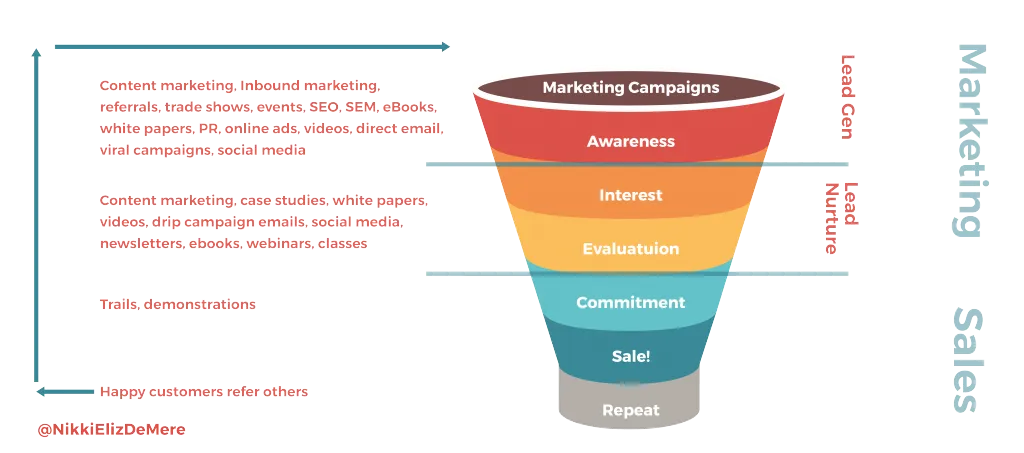
Break down your analysis by funnel stage to identify specific bottlenecks or drop-offs.
Awareness: Look at traffic sources and engagement metrics. Low engagement may suggest that your content or ads are not resonating with your target audience.
Interest: Measure interaction with lead magnets and content. High drop-off rates here could indicate that your offerings are not compelling enough to encourage further action.
Decision: Evaluate the effectiveness of your nurturing campaigns and sales outreach. Delayed or stagnant movement at this stage may highlight issues with your value proposition or customer hesitation.
Action: Examine checkout or sign-up processes for usability issues. A high abandonment rate at this stage often points to a complicated or untrustworthy checkout process.
Conducting Cohort Analysis

Cohort analysis allows you to track how specific groups of customers behave over time, helping you to understand the long-term value of different customer segments and the effectiveness of your funnel in nurturing these segments.
How to Conduct Cohort Analysis
Cohort analysis breaks down the data from your sales funnel into related groups or cohorts to better understand how specific segments of your audience behave over time.
Define Cohorts
Cohorts can be defined based on the time they entered the funnel, their demographic characteristics, or their behavior. For example, you might analyze all users who signed up for a free trial in January as one cohort.
Track Over Time
Measure how each cohort progresses through the sales funnel stages over a set period. This could involve tracking how many make a purchase, how many become repeat customers, and how many churn.
Analyze Patterns
Look for patterns in the data that can inform your sales strategy. For example, if one cohort has a significantly higher conversion rate, investigate what drove their decisions and apply those learnings to other segments.
Soliciting Customer Feedback
Direct feedback from customers can provide qualitative insights that metrics alone cannot. Surveys, interviews, and feedback forms can reveal why customers are dropping off or what factors influenced their decision to purchase.
Regularly Review and Optimize
Iterate Based on Data: Use your findings to make informed adjustments to your sales funnel. This might involve refining your messaging, improving user experience, or reevaluating your target audience.
Continuous Improvement: Sales funnel optimization is an ongoing process. Regularly review your metrics, test new strategies, and stay adaptable to market changes and customer feedback.
Essential Tools and Software for Building and Managing Your Sales Funnel
Building and managing an effective sales funnel requires a suite of tools and software designed to attract, engage, nurture, and convert leads into paying customers.
Leveraging the right technologies can streamline your sales process, enhance the customer journey, and improve overall sales performance.
Here are essential tools and software, incorporating keywords from the provided table, that are critical for building and managing your sales funnel:
1. CRM Software (Customer Relationship Management)

Importance of CRM Software in sales funnel by managing prospective and existing customer information, tracking interactions, and automating various stages of the sales process.
- Recommended Tools: Salesforce, HubSpot CRM, and Zoho CRM offer comprehensive features that facilitate lead tracking, sales pipeline visualization, and performance analytics, essential for optimizing your sales funnel.
2. Email Marketing Platforms

Important for nurturing leads through personalized communication, segmenting audiences, and automating email sequences to guide prospects through the sales funnel stages.
- Recommended Tools: Mailchimp, Constant Contact, and ActiveCampaign provide robust email marketing features, including automation, templates, and analytics to improve the effectiveness of your sales funnel process.
3. Landing Page Builders
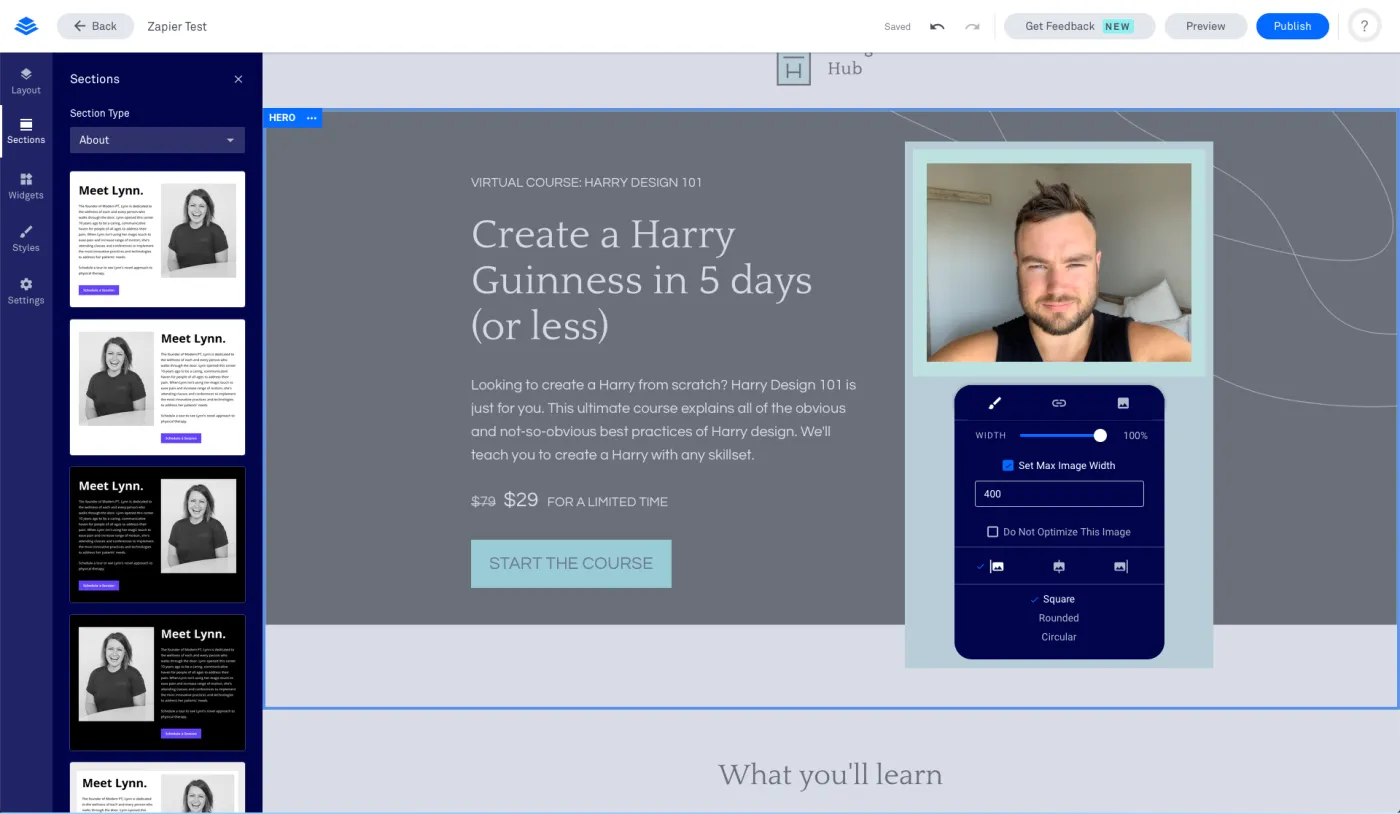
Enable the creation of optimized landing pages that capture leads and serve as crucial entry points into your sales funnel. These tools offer drag-and-drop functionalities, templates, and A/B testing capabilities.
- Recommended Tools: Unbounce, Leadpages, and ClickFunnels are popular choices for designing high-converting landing pages tailored to various stages of the sales funnel, from generating leads to closing sales.
4. Marketing Automation Platforms
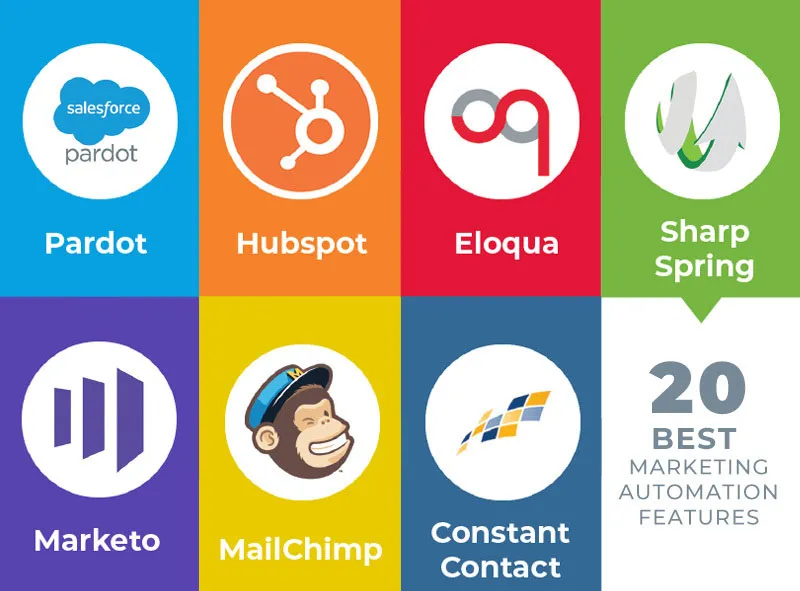
Automate repetitive marketing tasks, streamline sales funnel stages, and provide personalized experiences at scale. These platforms help in lead scoring, nurturing, and moving prospects through the funnel efficiently.
- Recommended Tools: HubSpot, Marketo, and Pardot offer marketing automation capabilities that sync with CRM systems, enhancing the alignment between marketing and sales teams and boosting sales success.
5. Analytics and Reporting Tools

Offer insights into the performance of your sales funnel, track customer interactions, and measure conversion rates at each funnel stage. This data is crucial for making informed decisions and optimizing your funnel.
- Recommended Tools: Google Analytics, Mixpanel, and Tableau provide deep analytics on web traffic, user behavior, and funnel conversion metrics, helping businesses refine their sales funnel strategies for better outcomes.
6. Social Media Management Tools

Assist in managing and optimizing social media campaigns that drive awareness and leads into the top of the funnel. These tools enable scheduling, monitoring, and analyzing social media content performance.
- Recommended Tools: Hootsuite, Buffer, and Sprout Social are effective for managing multiple social media platforms, engaging with the audience, and analyzing social media's impact on your sales funnel.
7. Customer Feedback and Survey Tools
Gather insights directly from your target audience and existing customers to improve your products, services, and the overall sales funnel experience.
- Recommended Tools: SurveyMonkey, Typeform, and Google Forms can collect valuable feedback at various sales funnel stages, informing adjustments to your sales strategy and customer journey optimization.
FAQ Section
What Are the Key Differences Between B2B and B2C Sales Funnels?
1. Length and Complexity
B2B sales funnels tend to be longer and more complex than B2C funnels. This is because B2B purchasing decisions often involve multiple stakeholders and a higher level of scrutiny, requiring more nurturing and engagement from sales reps to guide the potential customer through the funnel.
2. Content and Communication
In B2B funnels, the content is typically more detailed and focused on ROI, efficiency, and scalability, reflecting the business's needs. In contrast, B2C funnels often leverage emotional triggers and convenience to appeal to individual consumers.
3. Relationship Building
B2B sales emphasize building long-term relationships, given the larger contract values and longer sales cycles. This contrasts with B2C sales, where transactions can be quicker and more transactional.
4. Customization and Personalization
B2B funnels often require a higher degree of customization in the marketing funnel, with proposals and solutions tailored to the specific needs of a business. B2C funnels, while also benefiting from personalization, typically operate with a one-to-many approach due to the larger audience base.
How Can Small Businesses Benefit from Implementing a Sales Funnel?
1. Streamlined Sales Process
A well-defined sales funnel helps small businesses streamline their sales process, guiding potential customers from awareness to purchase more efficiently.
2. Improved Customer Targeting
By understanding each stage of the funnel, businesses can tailor their marketing and sales efforts to more effectively reach and engage their target audience.
3. Increased Conversion Rates
Implementing a successful sales funnel allows for better lead nurturing and follow-up strategies, significantly increasing the chances of conversion.
4. Data-Driven Insights
A sales funnel provides valuable insights into customer behavior and preferences, enabling businesses to make informed decisions and refine their marketing strategies for better results.
What Are Common Mistakes to Avoid When Developing a Sales Funnel?
Neglecting the Top of the Funnel
Failing to invest in building awareness and attracting a broad audience can limit the flow of potential customers into the funnel. Businesses should focus on expanding their own sales funnel's top to ensure a steady stream of leads.
Ignoring Customer Feedback
Not leveraging customer feedback to refine and adjust the sales funnel can lead to missed opportunities for improvement. Listening to customer needs and experiences can provide critical insights for optimizing the funnel.
Lack of Follow-Up
One common mistake is inadequate follow-up by sales reps with leads that don't immediately convert. Regular, personalized follow-up is essential for moving potential customers through the funnel and toward a purchase.
Overcomplicating the Funnel
Creating a sales funnel that is too complex for the customer to navigate can deter potential sales. A successful sales funnel should be straightforward, guiding the customer naturally from one stage to the next without confusion.





.jpg)

.jpg)
